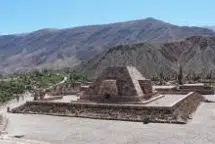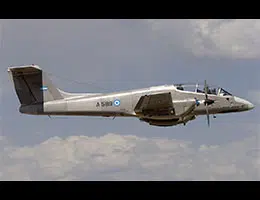 Pucará , also accepted as pucara , is a term of Quechua origin that is used to refer to a type of fortress built by indigenous peoples of the American continent . These structures, which were built in elevated areas, were developed with pircas : dry stone walls.
Pucará , also accepted as pucara , is a term of Quechua origin that is used to refer to a type of fortress built by indigenous peoples of the American continent . These structures, which were built in elevated areas, were developed with pircas : dry stone walls.
Pucaras were common in Andean cultures distributed in parts of South America. These were strategic and defensive installations where the rulers resided.
In Argentina , for example, the remains of the Tilcara pucará can be found, in the province of Jujuy . Located at the top of a hill , it was populated at the end of the 8th century .
It is an archaeological site made up of several constructions made by the Tilcaras, belonging to the group of indigenous peoples known by the names of Humahuacas or Omaguacas . The pucará of Tilcara is located in a strategic location in the Quebrada de Humahuaca, at a distance of 1 kilometer from the homonymous city, on top of a hill that is located 80 meters high and next to the confluence of the Huasamayo and Grande, whose altitude in said area is close to 2450 meters above sea level.
The reason these towns built their pucará there is that it allowed them to dominate the only two roads in the area, in addition to having the defense of the cliffs of the Río Grande and the slopes. To counteract the easily accessible slopes, they decided to build high walls. It is important to note that these spaces had objectives beyond defense, since they also served for certain religious practices and to control the crop fields and surrounding homes.
The Tilcara pucará is one of the oldest and best known in its region. Although its exact area has not been measured, it is estimated that it could reach 15 hectares. Regarding its age, it is around 1160 years old. On its surface we can see various neighborhoods for the inhabitants, a necropolis, several corrals and even a site dedicated to sacred ceremonies .
The person responsible for the discovery of this important pucará was Juan Bautista Ambrosetti , a renowned ethnographer and naturalist born in Argentina in 1865. The event took place in 1908, while he was in the middle of an archaeological investigation in the northwest of the country with Salvador Debenedetti , his faithful disciple who after his death carried out his work in his name. They spent three more years there, during which they collected around three thousand pieces, thanks to whose observation they were able to estimate what the life of its inhabitants had been like before the Spanish invasion.
 Near San Pedro de Atacama , in Chile , is the Quitor pucará . It was built in the 12th century on a slope about 80 meters high. Ecuador , for its part, has the Quitoloma pucará , in the province of Pichincha .
Near San Pedro de Atacama , in Chile , is the Quitor pucará . It was built in the 12th century on a slope about 80 meters high. Ecuador , for its part, has the Quitoloma pucará , in the province of Pichincha .
The term Pucará also appears in the name of several current administrative divisions. In Bolivia , Pucará is the name of a municipality that is part of the province of Vallegrande (department of Santa Cruz ). Peru , meanwhile, has the town of Pucará in the province of Lampa (department of Puno ).
The IA-58 Pucará , on the other hand, is the name of an aircraft model created by the Argentine Air Force in the 1960s . This turboprop aircraft was designed for attacking ground targets.
The Argentine State used Pucará aircraft to combat the guerrillas in the province of Tucumán . Then he used them in the Malvinas War in 1982 . Colombia , Uruguay and Sri Lanka are other countries that turned to the Pucará for the development of different missions.
